The Vinh Moc Tunnels, once regarded as an underground village, are a military-civilian structure intricately linked to the historical events of Vietnam’s resistance against American forces. Situated in the village of Vinh Moc in Kim Thach, this complex lies on a red-earth hill near the coast, approximately 14km east of Ho Xa town in Vinh Linh district and 6km north of Cua Tung.
As per the Geneva Accords of 1954, Quang Tri was divided at the 17th parallel. From 1965, the U.S. initiated air raids in North Vietnam, turning Vinh Linh, north of the Ben Hai River, into a bomb-riddled frontline.
Responding to the dire wartime conditions, the Vinh Linh region developed an extensive system of village tunnels and shelters, with Vinh Moc Tunnels standing out as a prime example of military-civil engineering.
According to Le Minh Tuan, Director of the Department of Culture, Sports, and Tourism of Quang Tri, construction of the Vinh Moc Tunnels began in early 1965 and was completed on February 18, 1966.
The Vinh Moc Tunnel complex was built through the efforts and intelligence of the people of Quang Tri, involving around 18,000 workdays. Despite the relentless bombings, they excavated and moved 6,000 cubic meters of earth and rock to complete this extraordinary structure.
To avoid bombings, the Vinh Moc Tunnels were designed to accommodate the daily lives of residents, store weapons and supplies, and house government, military, and public facilities (meeting halls, maternity homes, surgical stations, communication posts). The entire system features 13 entrances (7 leading to the sea and 6 to the hill).
To ensure living conditions for hundreds of people, several living quarters were built along the tunnel walls. Each small dwelling accommodated about 3-4 people. Inside the Vinh Moc Tunnels are three wells, a 50-person meeting hall, a medical station, a surgical room, a maternity home, and Hoang Cam kitchens.
The tunnels have a three-tiered structure: the first tier, 12-15 meters underground, served as a temporary combat station; the second tier, 18 meters deep, housed residents and the headquarters; and the third tier, 22 meters deep, was used for storage.
Sharing with VietNamNet, Thanh Nhan, a tourist from Hue City, mentioned taking advantage of the summer break to bring her children to historical sites to help them experience and understand the nation’s heroic yet tragic wartime history.
"Deep inside the tunnels, we sensed the hardships, losses, and pains endured by our people during the wars. The reenacted scenes of work and daily life in the tunnels genuinely moved us," Nhan said.
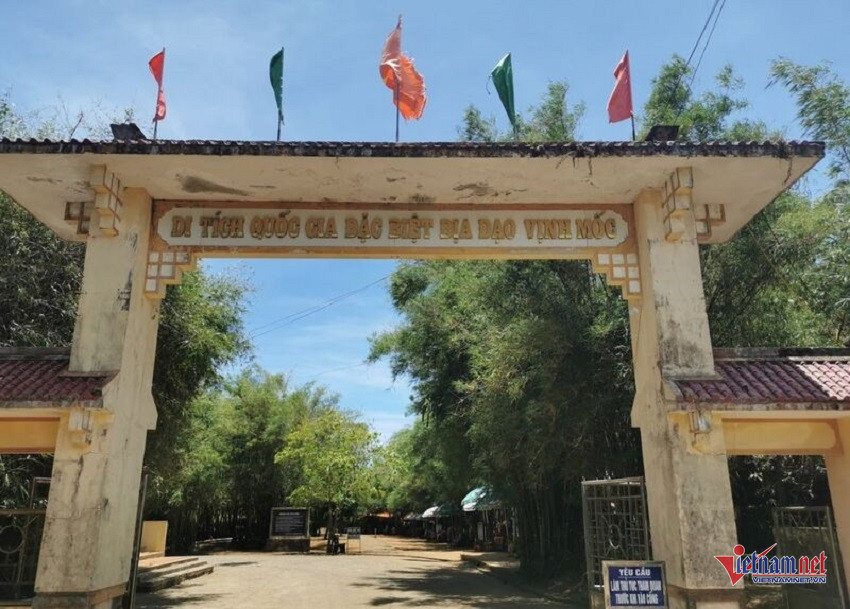
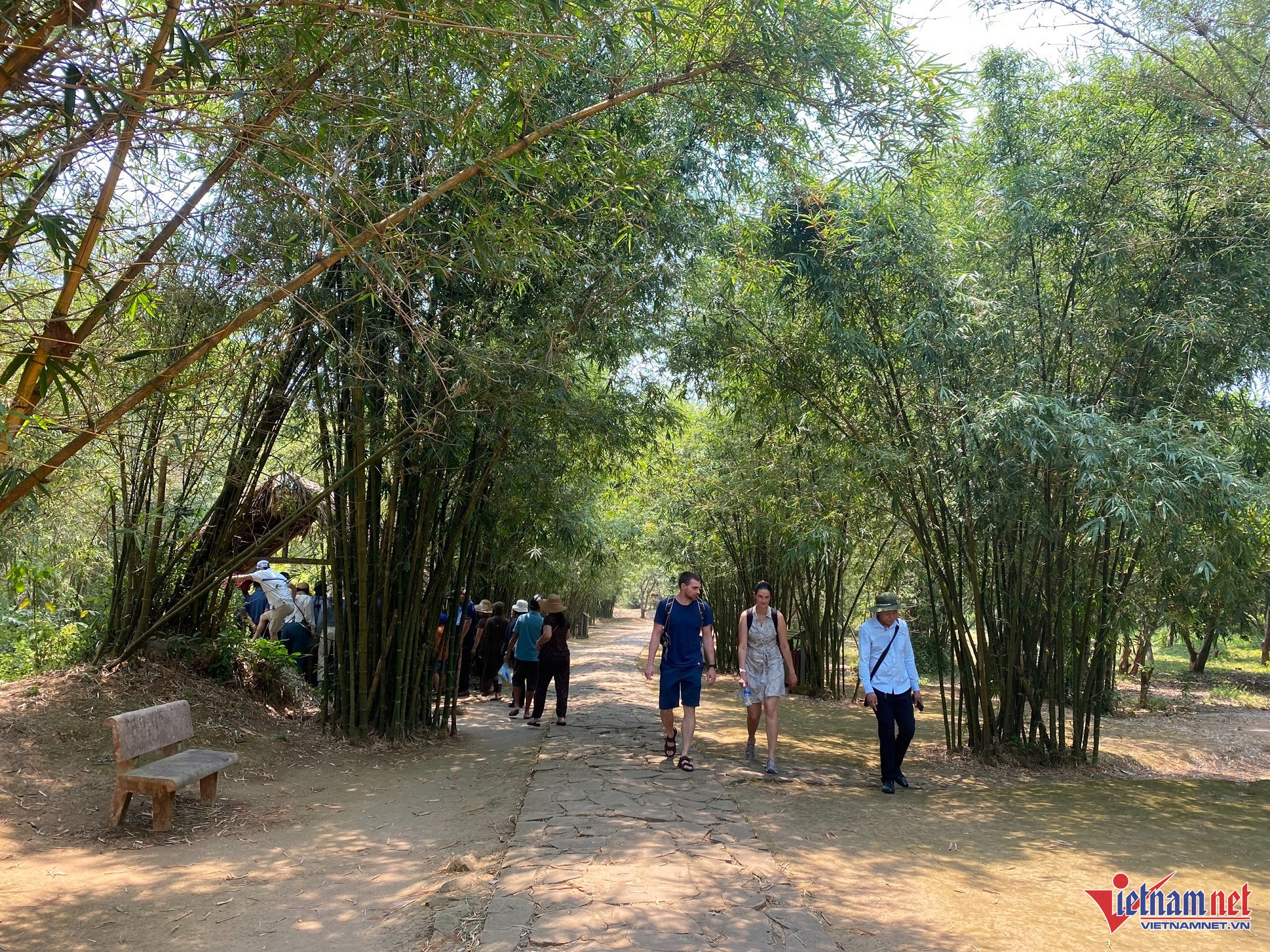
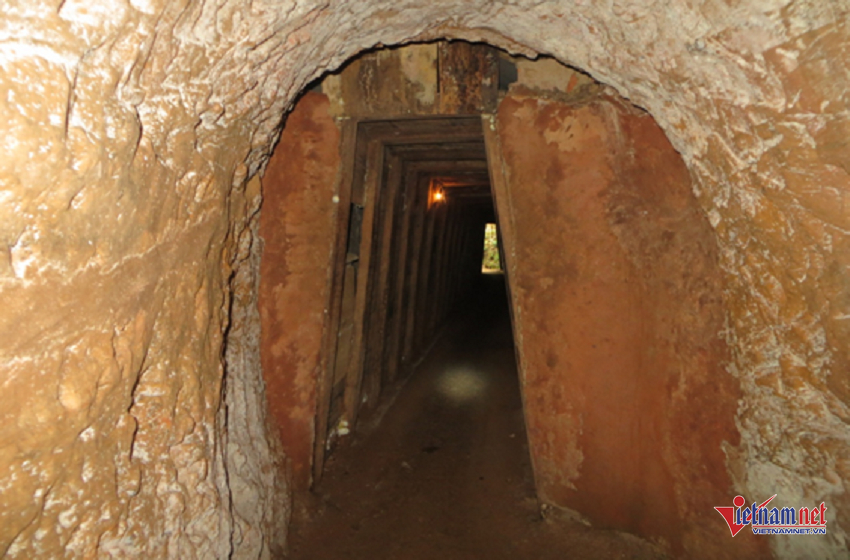
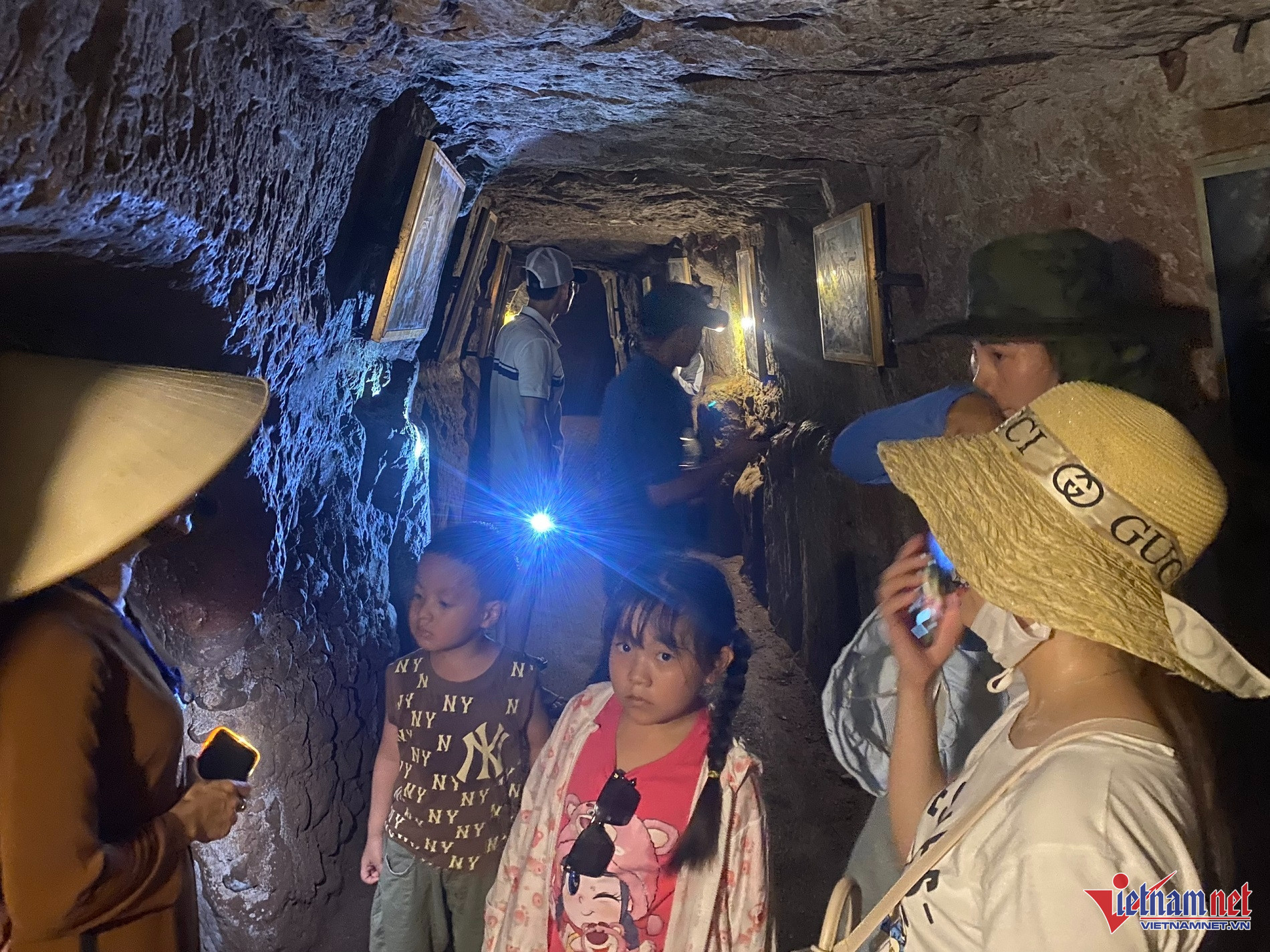
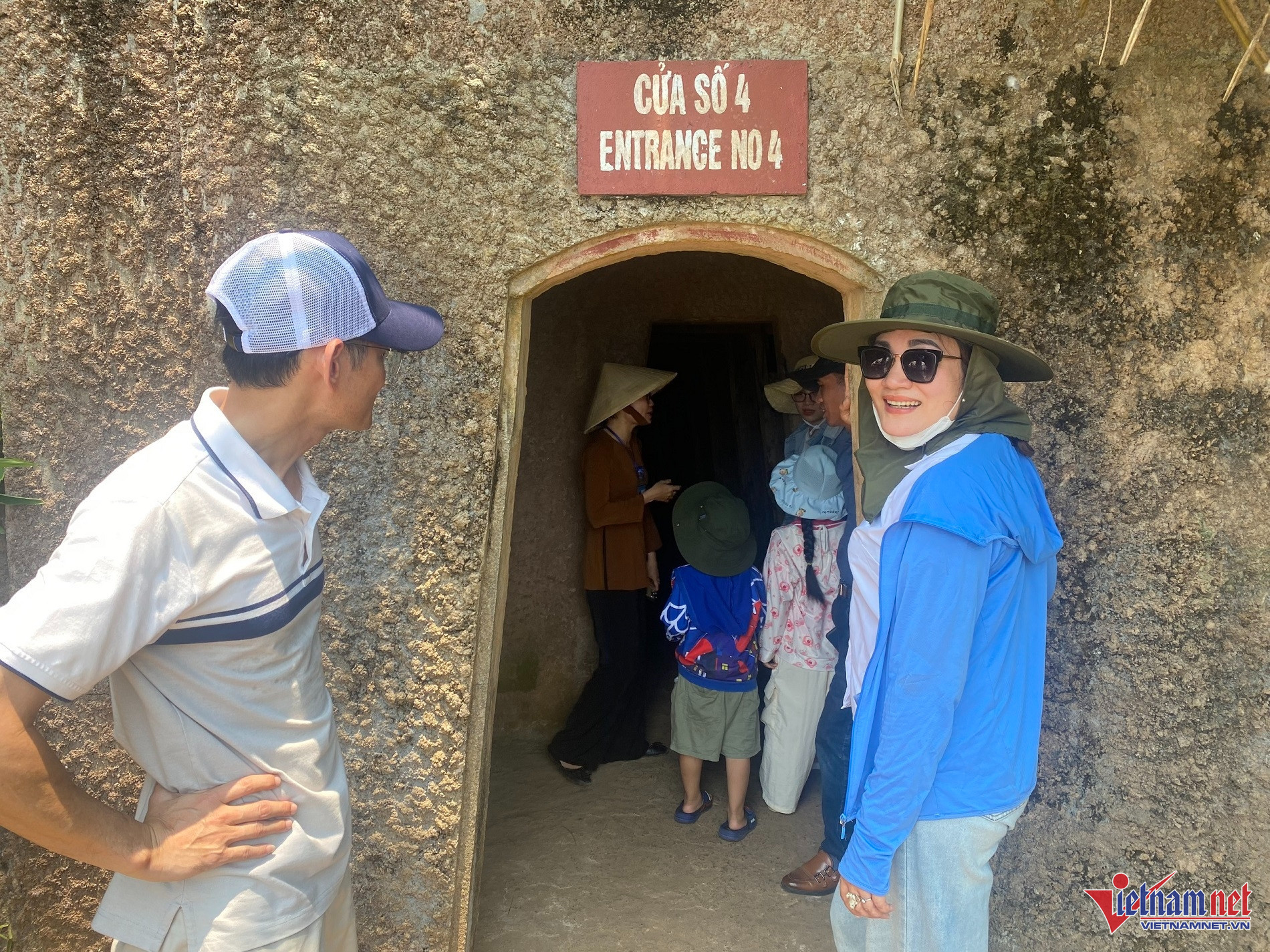
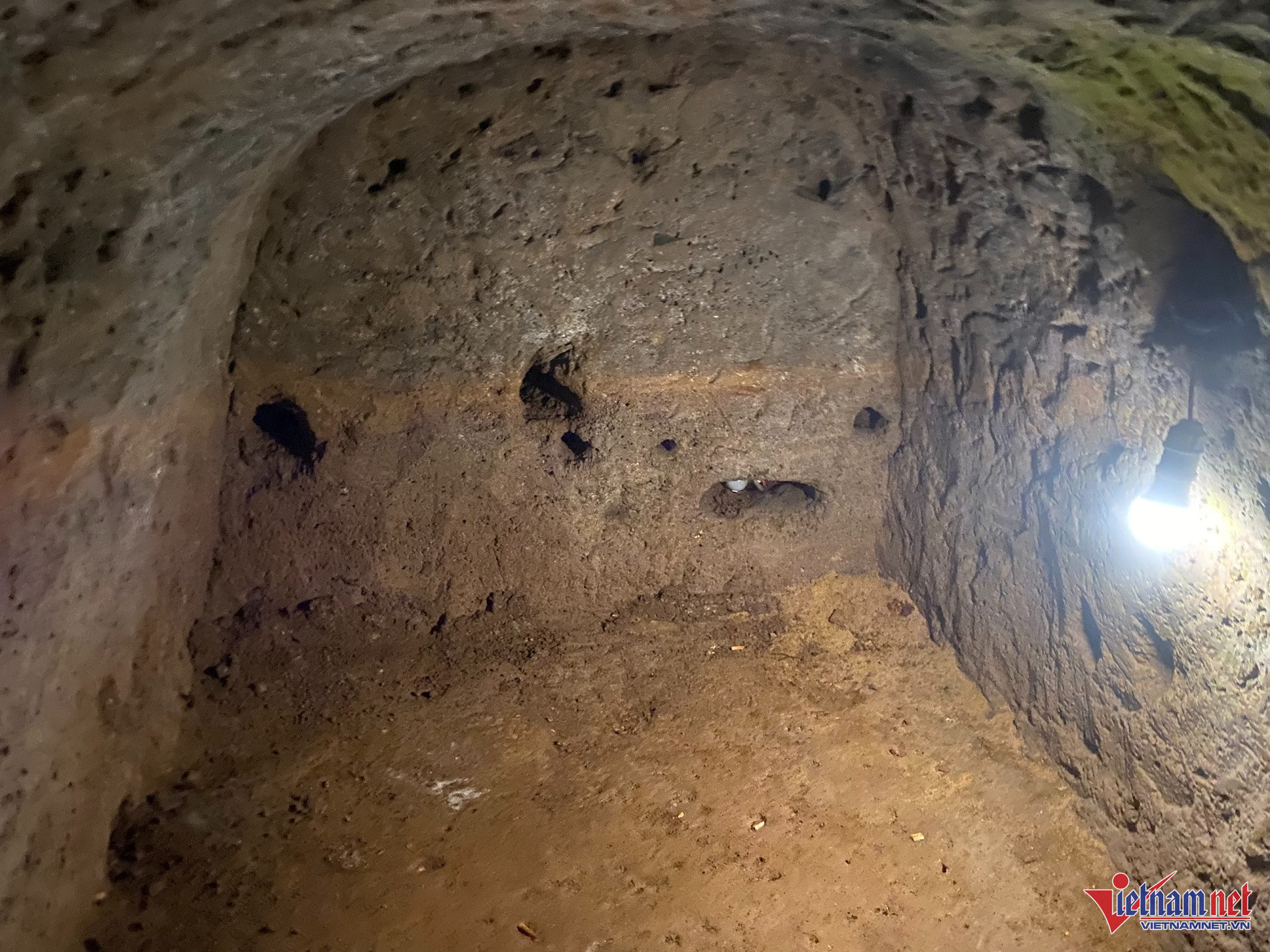
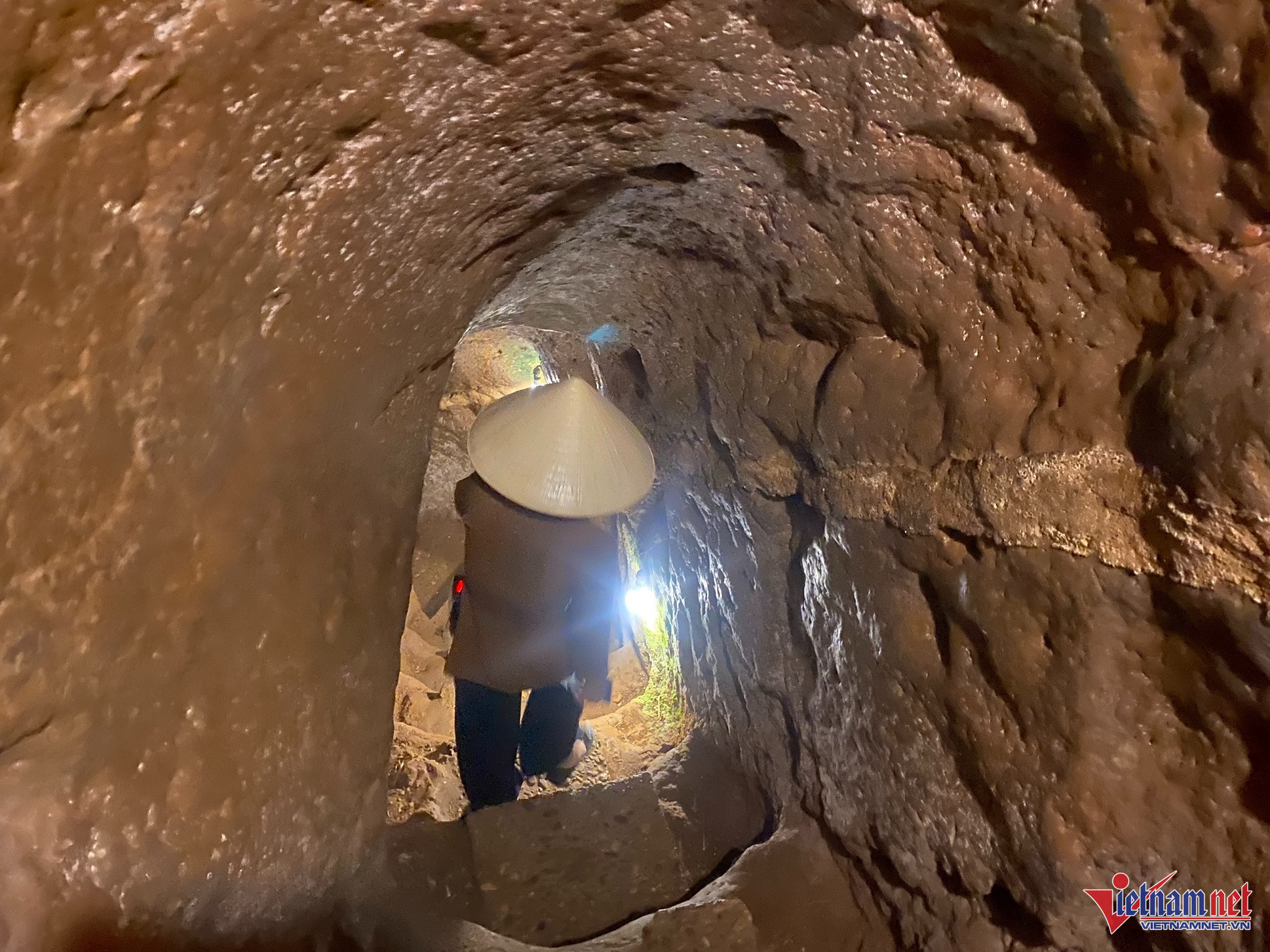
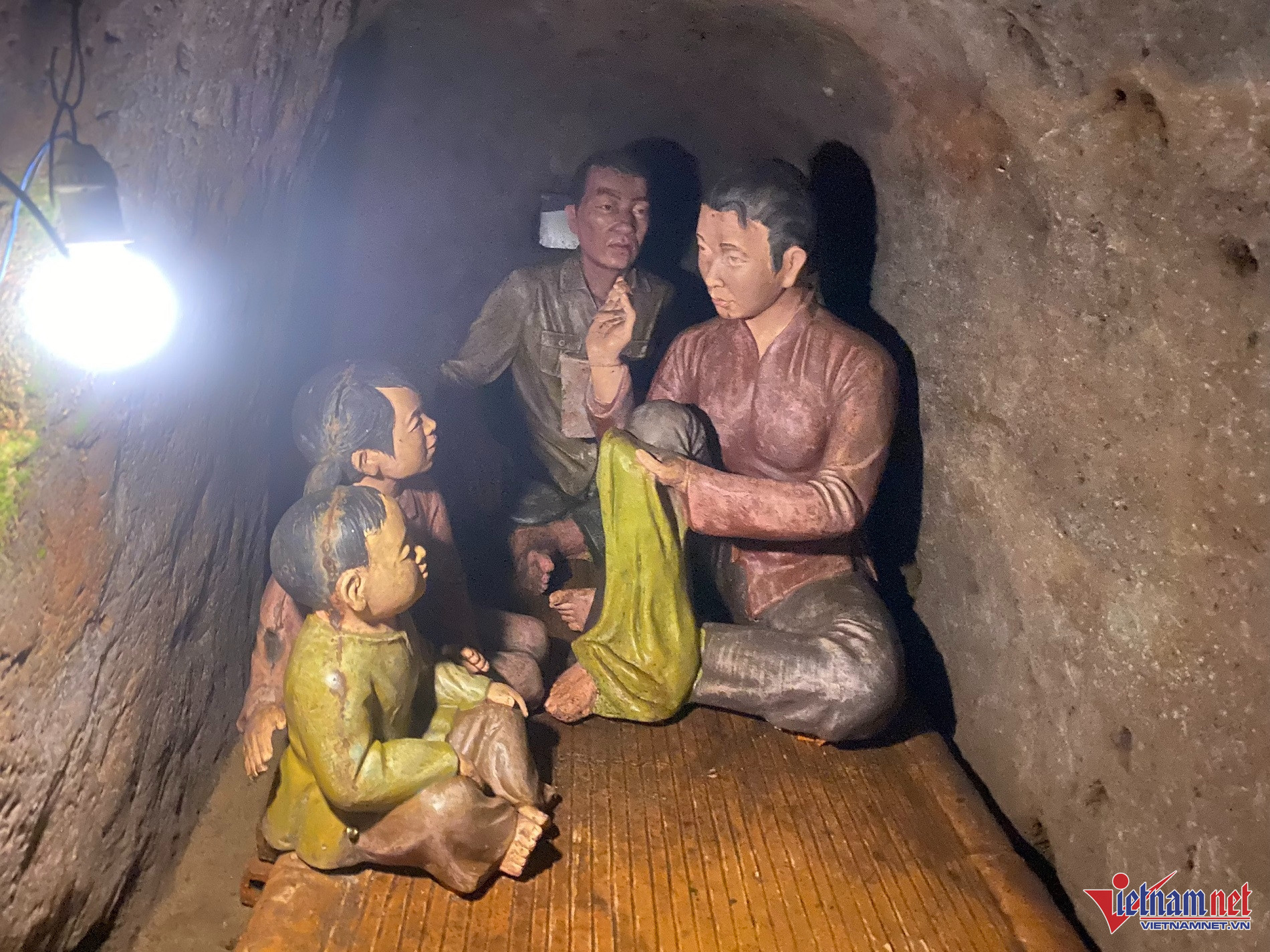
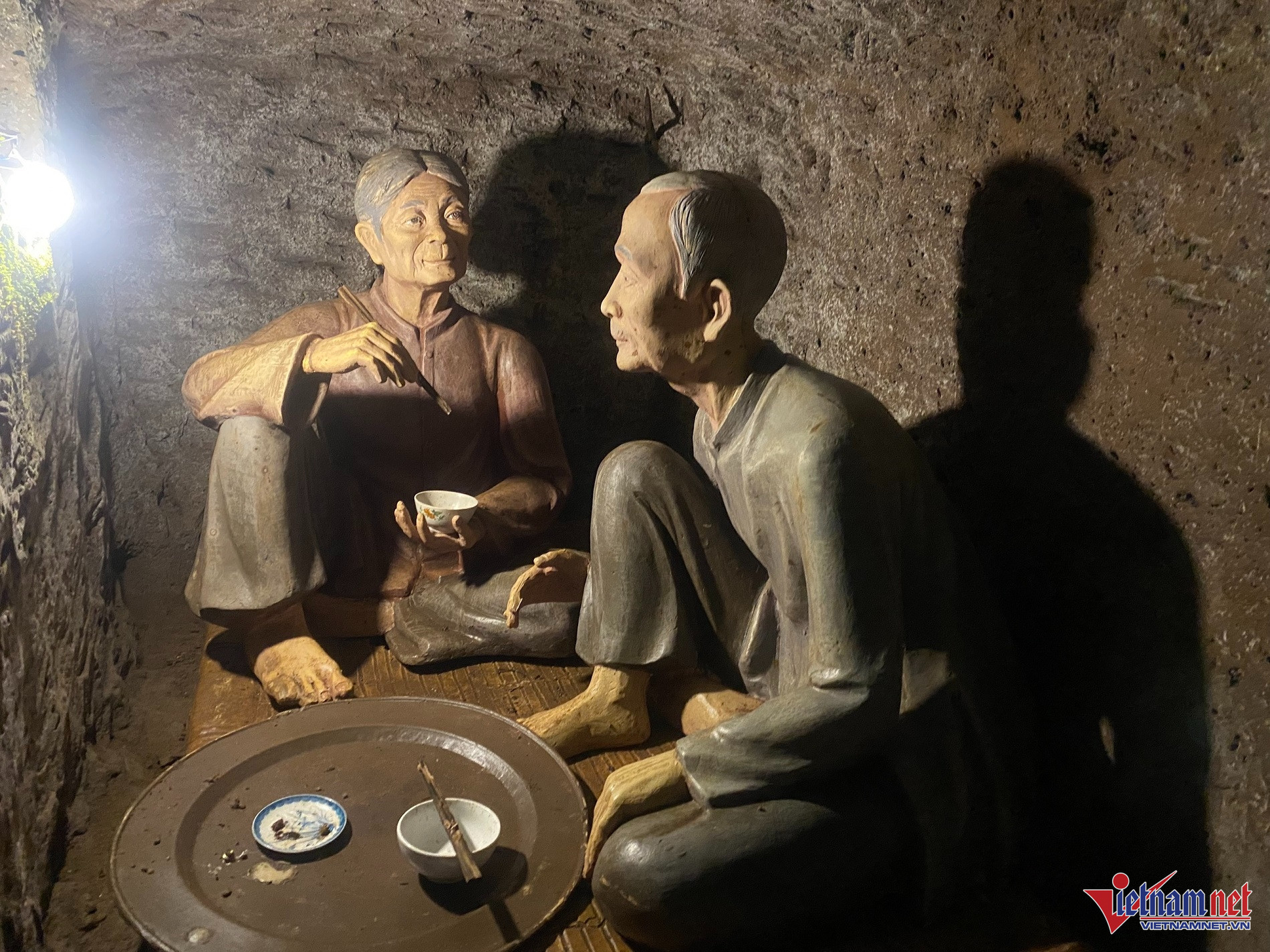
The image recreates a meal of the people in the underground tunnels during the fierce years of war. Photo: QT.
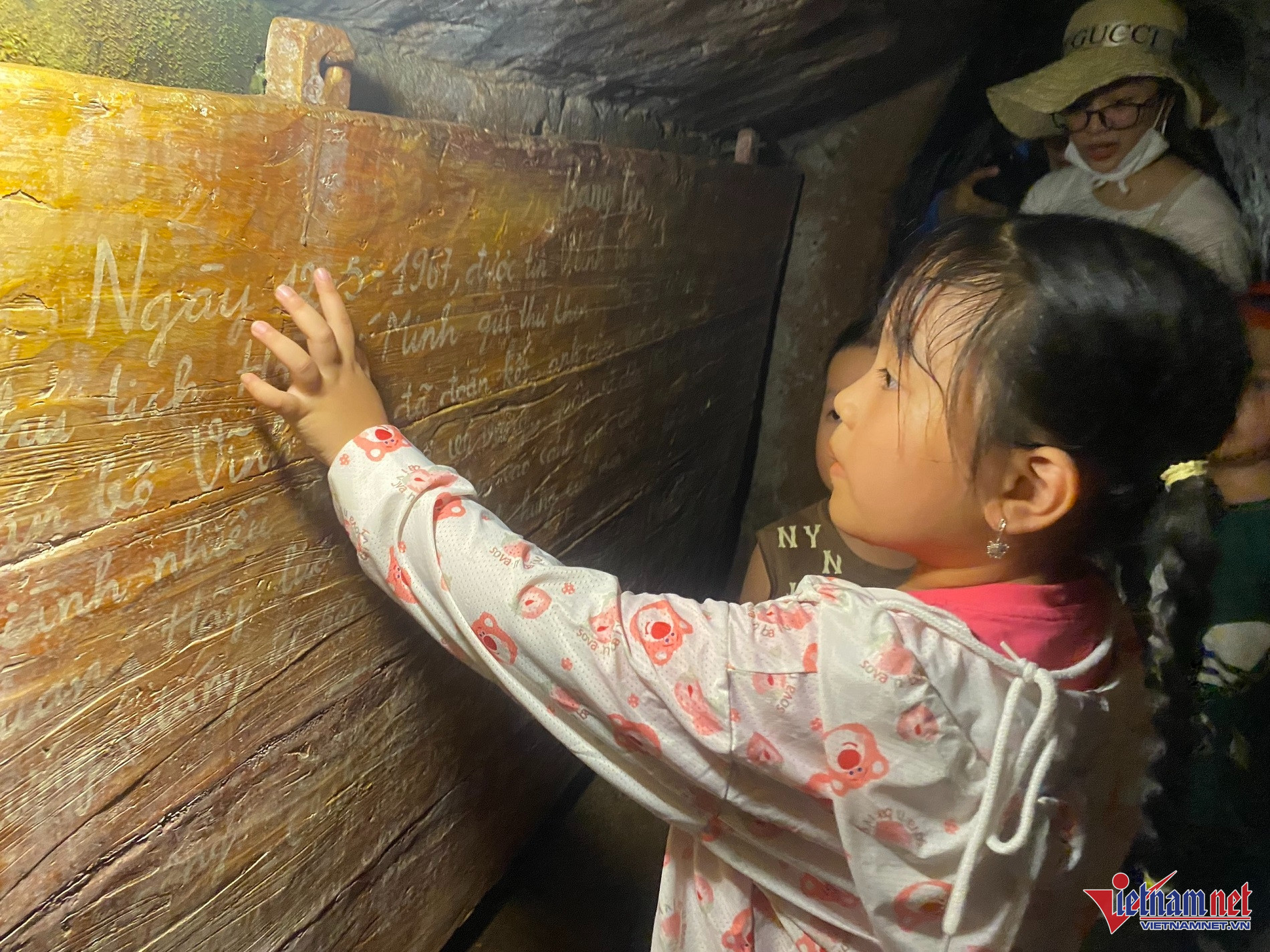
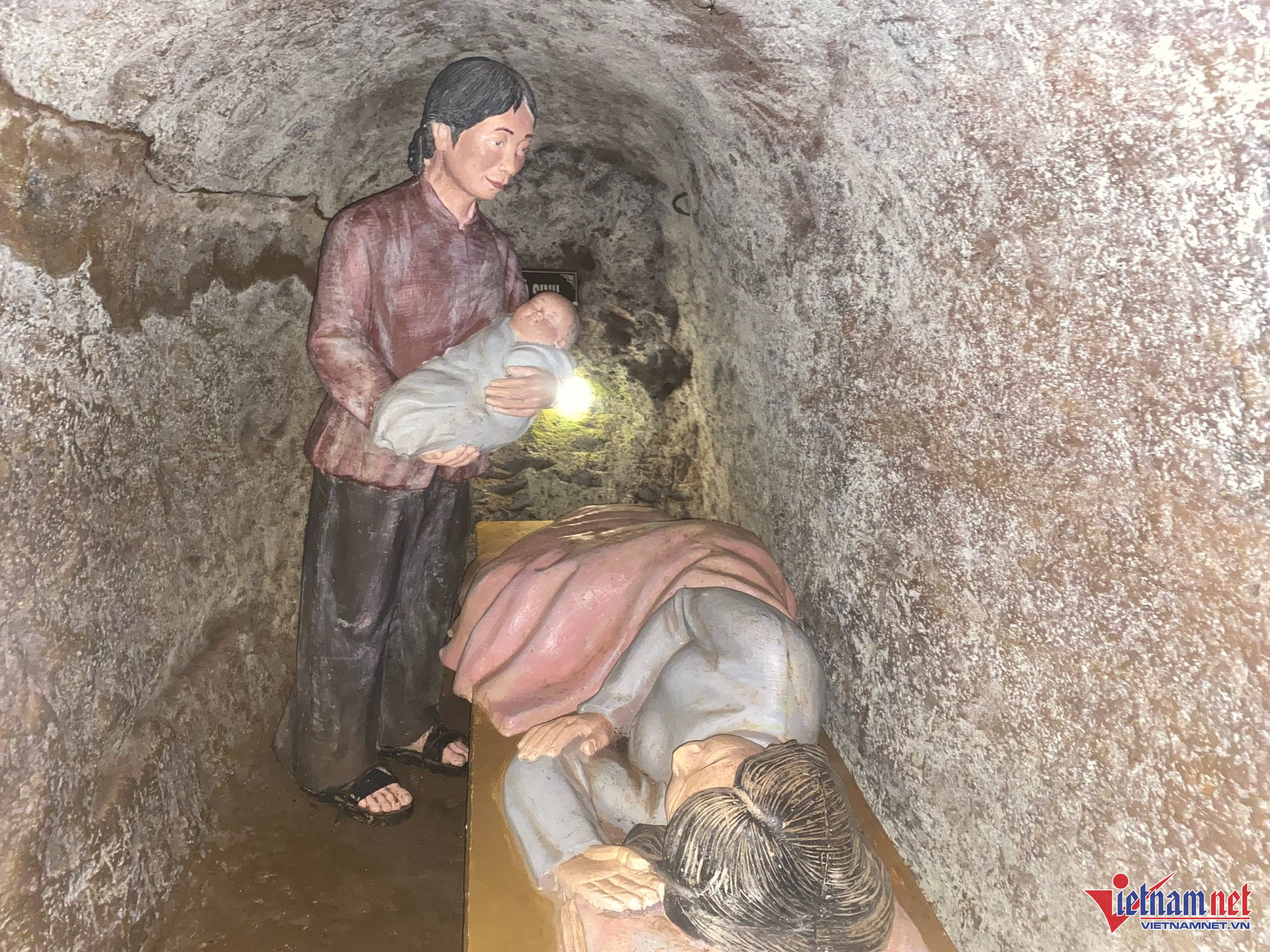
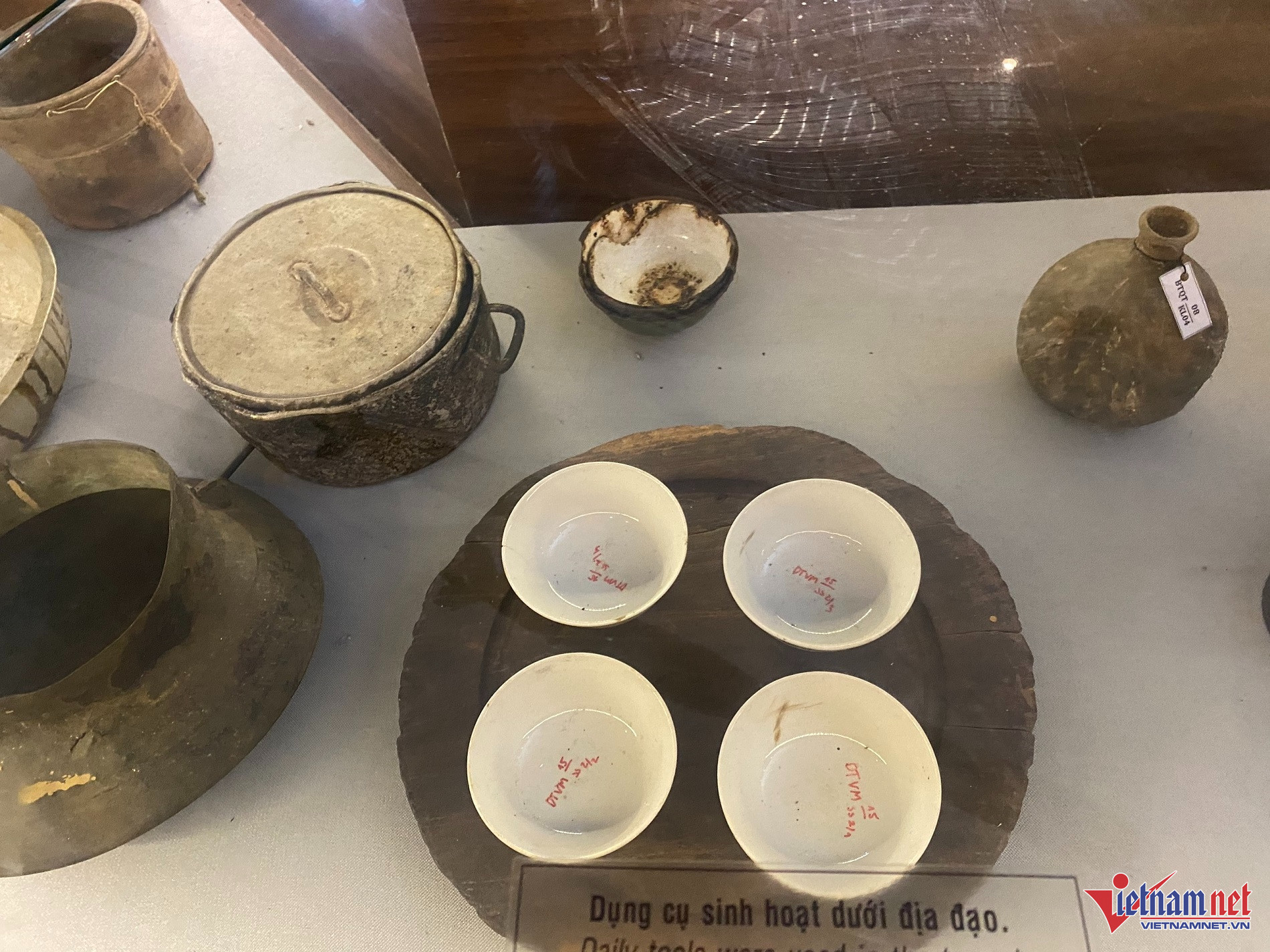
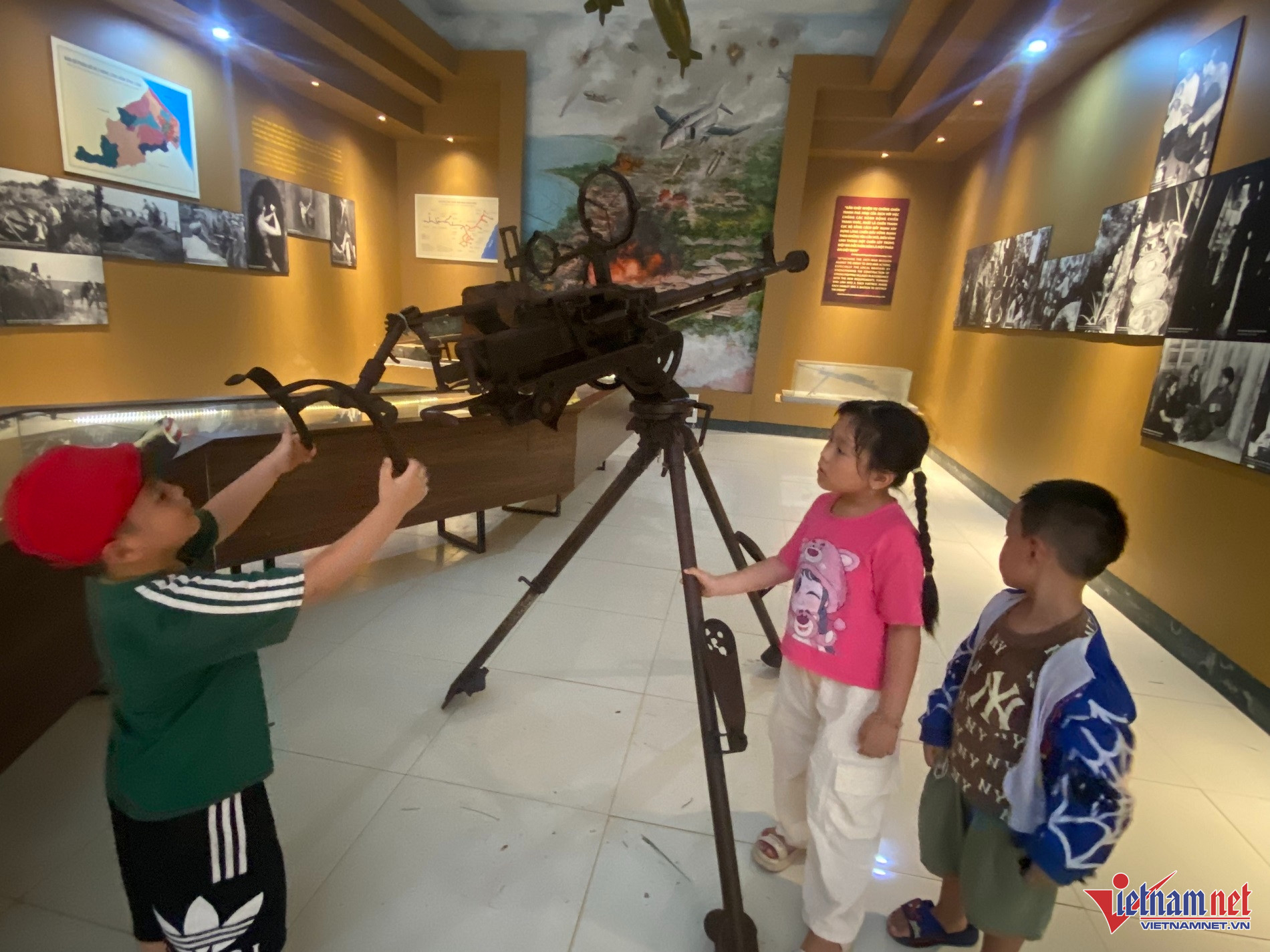
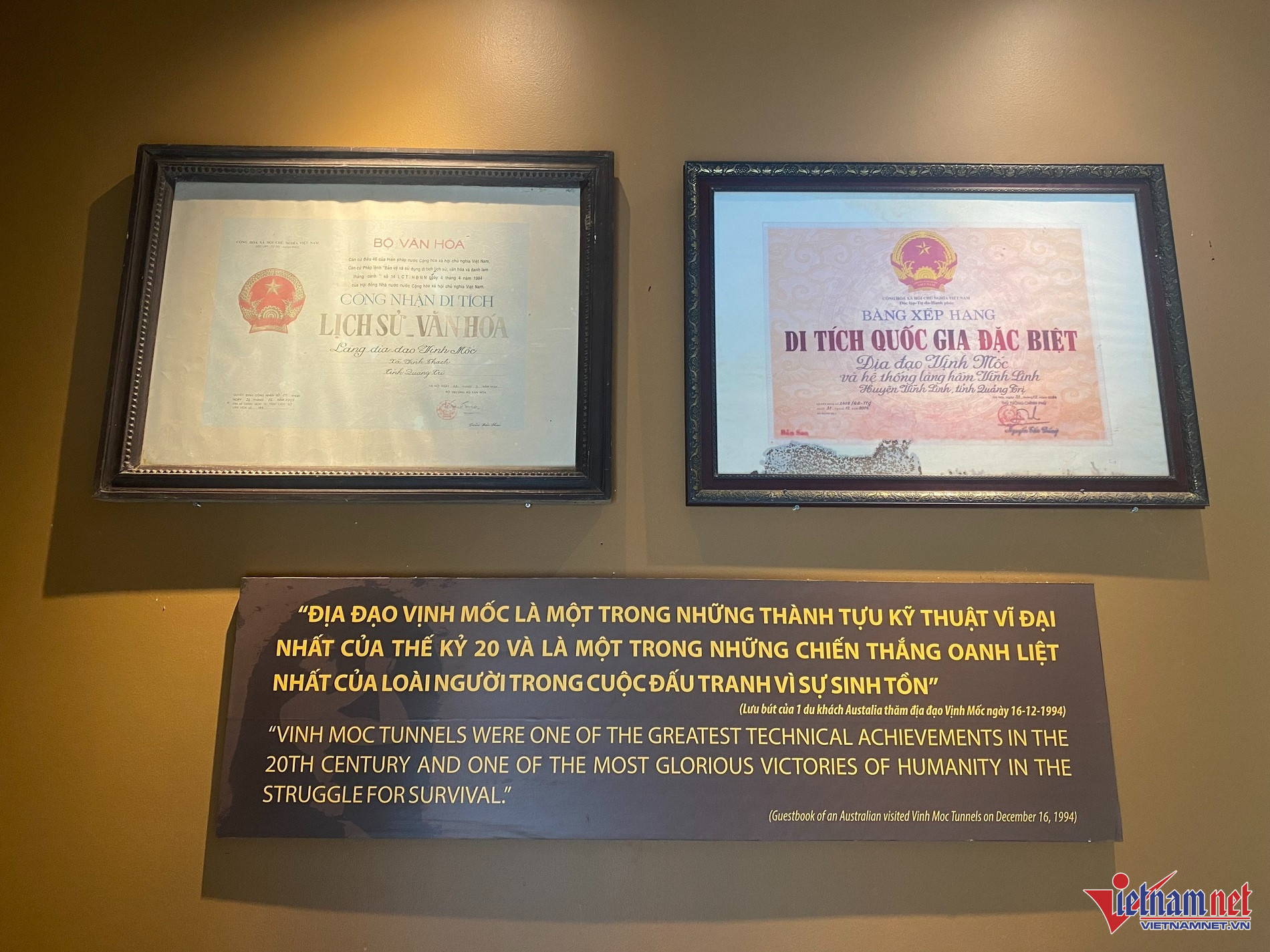
With its immense historical value, the Vinh Moc Tunnels were recognized as a national historical and cultural relic by the Ministry of Culture - Information (now the Ministry of Culture, Sports, and Tourism). In 2014, the tunnels were designated as a special national relic. Photo: QT
Quang Thanh